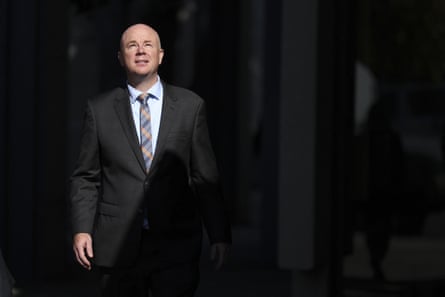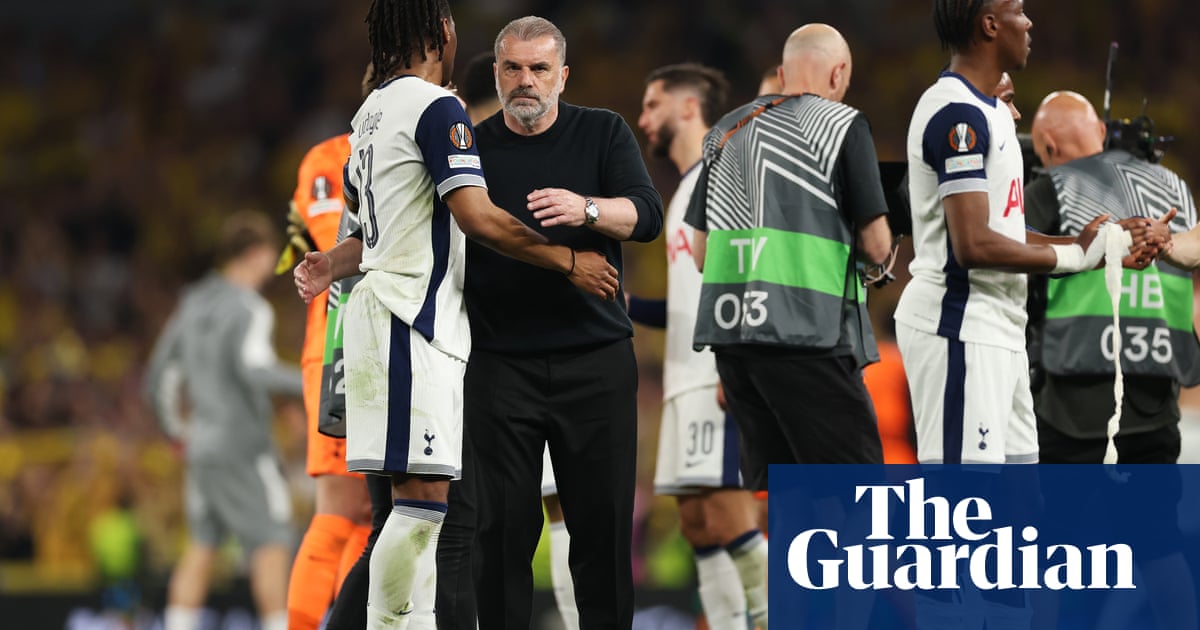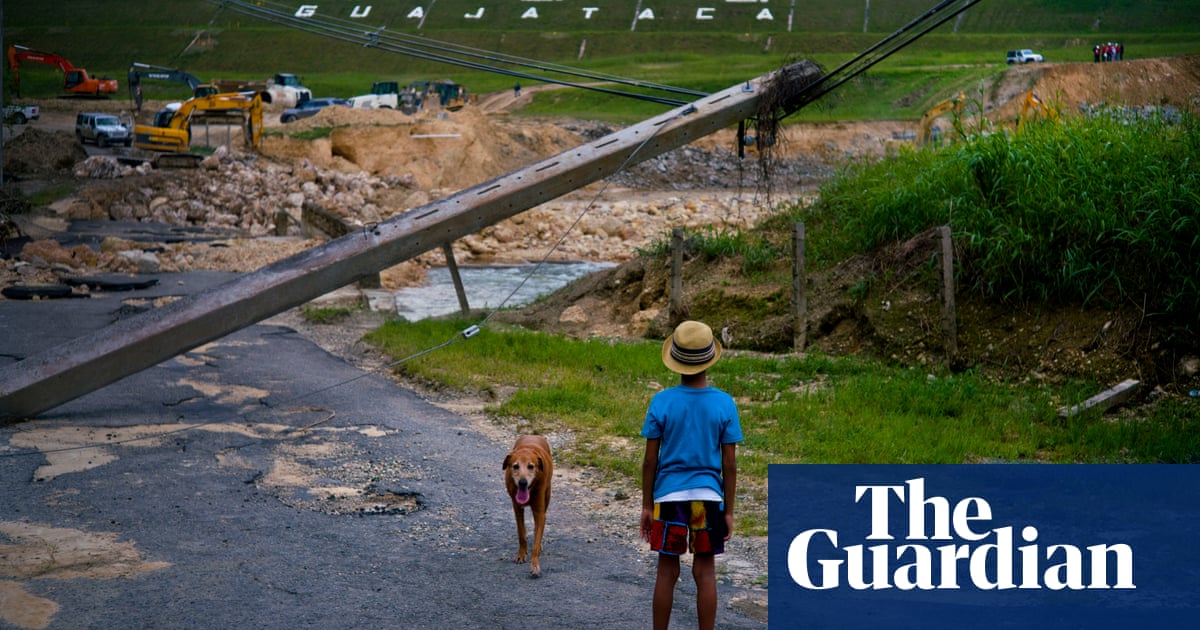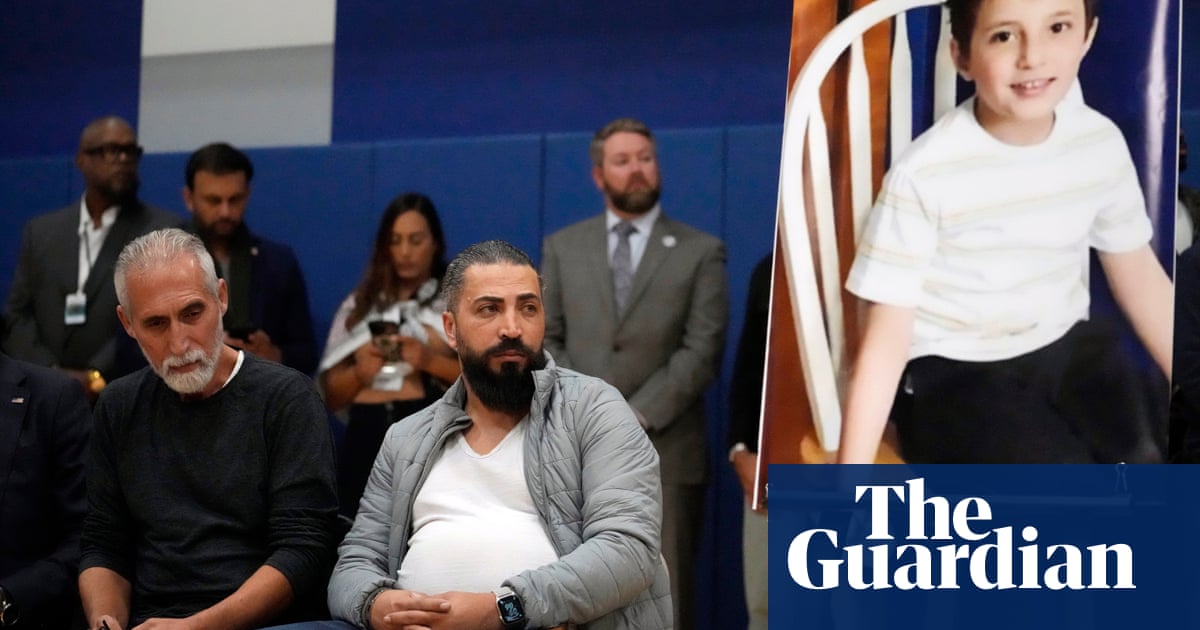On the afternoon of 29 July 2023, five people sat down to lunch in the dining room of a house in Leongatha, a small town in the South Gippsland region of Australia’s south-east.
Erin Patterson owned the house, and the guests were her parents-in-law, Don and Gail Patterson; Gail’s sister, Heather Wilkinson; and Ian Wilkinson, Heather’s husband.
One of the six chairs at the dining table remained empty. Patterson’s estranged husband, Simon, was expected to join them, but had cancelled the night before.
It was unusual for Patterson to host the group, but she told them she faced an unusual circumstance: she had been diagnosed with ovarian cancer, and wanted their advice on what to tell the two children she shared with Simon.
Before starting lunch, they said grace. Ian was the pastor at the nearby Korumburra Baptist church, and the rest of the group regularly attended his Sunday service.
On the plates in front of them were individual beef wellingtons prepared by Patterson: eye fillet steaks, topped with a mushroom paste, and encased in pastry. They started to eat.
Three months later, Patterson was charged with murdering Don, Gail and Heather, and attempting to murder Ian. She has pleaded not guilty, and her trial started on 29 April.

The Victorian supreme court heard this week that it is not in dispute that the beef wellingtons contained Amanita phalloides, or death cap mushrooms. It is not in dispute that Patterson put them there. The court also heard that both the prosecution and defence agree that Patterson had never been diagnosed with cancer.
What is in dispute is whether she meant to poison her four guests. Her lawyer, Colin Mandy SC, described it as a tragic accident. The prosecutor, Nanette Rogers SC, said that Patterson “deliberately poisoned” her lunch guests “with murderous intent”.
After both finished their opening address, Justice Christopher Beale said there were two key issues at the heart of the case: whether Patterson deliberately poisoned anyone, and whether she intended to kill or cause serious injury when she did.
Patterson watched intently throughout the first week of her trial, often blinking rapidly, with her chin raised slightly, and her mouth downturned.
She would become emotional at times, often when there was mention of family members or her deceased in-laws.
Courtroom 4, on the second level of the Latrobe Valley law courts, has the jury box to the right, the witness box to the left, and the dock at the rear of the court.
This means Patterson is seated behind most of the public seating. Reporters have to turn around in their seats and look behind them to gauge her reaction to proceedings. Often, she turns her head to meet their eye.
The only witness in the first week of the trial was Simon Patterson.
A civil engineer, he met Patterson about 20 years earlier, when both were working at a local council, Monash, in Melbourne’s south-east.
Erin Patterson: how Australia's alleged mushroom poisoning case unfolded — a timeline
Show29 July 2023
Erin Patterson hosts lunch for estranged husband Simon’s parents, Don and Gail Patterson, and his aunt and uncle Heather and Ian Wilkinson. Patterson serves beef wellington.
30 July 2023
All four lunch guests are admitted to hospital with gastro-like symptoms.
4 August 2023
Gail Patterson and Heather Wilkinson die in hospital.
5 August 2023
Don Patterson dies in hospital. Victoria police search Erin Patterson’s home and interview her.
23 September 2023
Ian Wilkinson is discharged from hospital after weeks in intensive care.
2 November 2023
Police again search Erin Patterson’s home, and she is arrested and interviewed. She is charged with three counts of murder relating to the deaths of Don and Gail Patterson and Heather Wilkinson, and the attempted murder of Ian Wilkinson.
29 April 2025
Murder trial begins. Jury hears that charges of attempting to murder her estranged husband Simon are dropped.
She worked in the council’s animal welfare area. They were part of the same “eclectic” group of friends at first, he said, before a relationship developed.
The history of their relationship unfolded gradually during his time in the witness box: children arriving in 2009 and 2014, Patterson receiving a $2m share of her grandmother’s estate, a series of separations and reconcilements.
The final separation occurred in 2015, though for much of the next eight years Simon felt they could again reconcile.
The months between late 2022 and the lunch have taken on a central importance to the case, as they are seen by the prosecution as representing a deterioration in the relationship.
Until this point, although separated, the couple holidayed together, and Simon even advised Patterson on the construction of her new property, where the lunch would eventually be hosted.
At a church service on 16 July 2023, Simon said, Patterson invited him, his parents, and the Wilkinsons to lunch. It was to be held the Saturday after next, on 29 July.

Simon agreed to go, but the night before the lunch he texted her to cancel.
“Sorry, I feel too uncomfortable about coming to the lunch with you, Mum, Dad, Heather and Ian tomorrow but I’m happy to talk about your health and implications of that at another time,” he wrote to Patterson at 6.54pm, according to a text shown to the court.
“If you’d like to discuss on the phone, just let me know.”
Patterson then replied at 6.59pm: “That’s really disappointing. I’ve spent many hours this week preparing lunch for tomorrow which has been exhausting in light of the issues I’m facing and spent a small fortune on beef eye fillet to make beef wellingtons because I wanted it to be a special meal, as I may not be able to host a lunch like this again for some time.
“It’s important to me that you’re all there tomorrow and that I can have the conversations that I need to have. I hope you’ll change your mind.
“Your parents and Heather and Ian are coming at 12.30. I hope to see you there.”
Simon said he did not respond. He had already told his parents he would not be attending.

The prosecution say the guests’ beef wellingtons were served the following day on four large grey plates, with Patterson serving herself on a smaller, lighter coloured plate.
Within 12 hours of the lunch, the guests were all violently ill. Patterson also told family and medical staff that she became unwell over the same period.
Mandy says that it was in this context, having discovered that food she prepared had resulted in her guests becoming horribly unwell, that Patterson panicked.
She lied to police about not owning a food dehydrator, nor using own, he said. CCTV footage showed her dumping the dehydrator at the local tip. A forensic analysis showed it had traces of death cap mushrooms, and her fingerprints.
Patterson also lied to police when she told them she had never foraged for mushrooms, Mandy said.
The prosecution say data from one of Patterson’s phones suggests that she twice travelled to locations that had been publicly identified as having death cap mushrooms. The locations were shared on iNaturalist, and the posts included exact coordinates and images.
It is also alleged that one of the phones regularly used by Patterson in the lead up to the lunch has never been found by police, and that another she handed to them under the false pretence it was the phone she normally used was subject to a “factory reset” while they were searching her house.
“The starting point for you is that Erin Patterson is innocent of these charges,” Mandy said towards the end of his opening address.

He then stood facing the jury, his hands outstretched, as if showing off the size of a particularly big catch.
“If there’s a scale where innocent is at one end, and guilty is at the other, you’re down here at this end,” he indicated with his right hand, “and what the prosecution has to do is drag you as far up that line as they can before you could consider whether or not Erin Patterson is guilty.
“Your starting point, the proper place for a jury to start at this point, is down at this end of the scale. And they have to pull you from there with evidence, and not with guesswork, speculation, theories. With evidence.
“And it’s only if they get you all the way to the other end that you could return a verdict of guilty, because your oath that you’ve given is to give a true verdict according to the evidence.”
The trial continues.

.png) 14 hours ago
8
14 hours ago
8













































